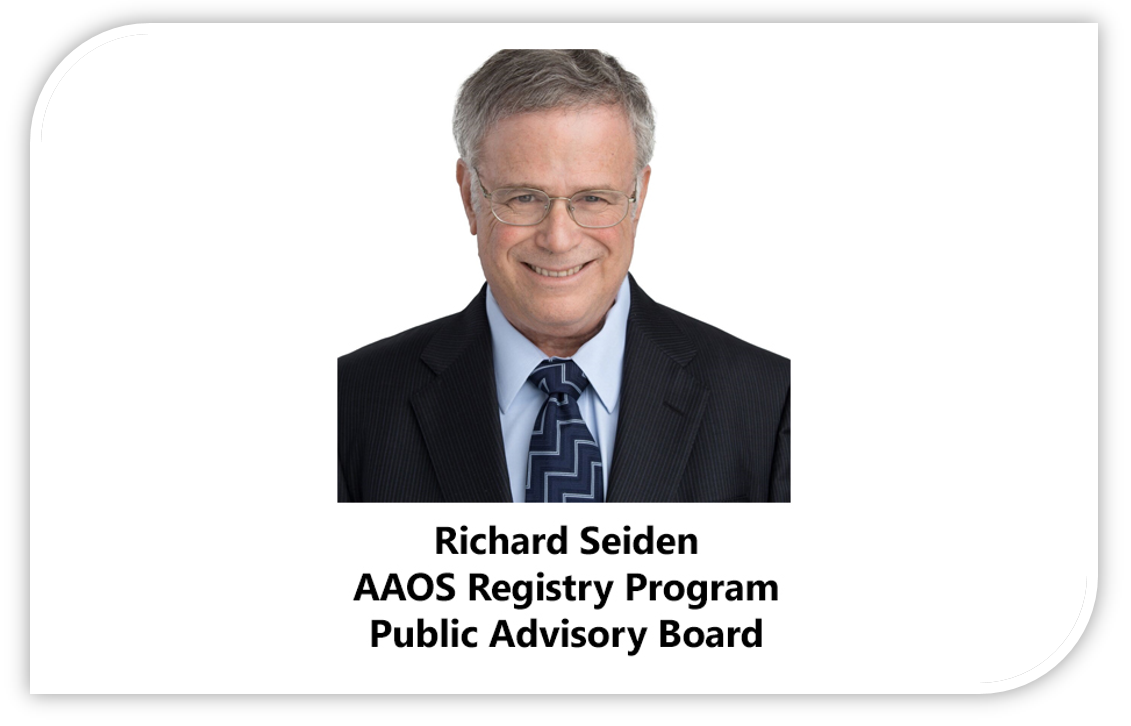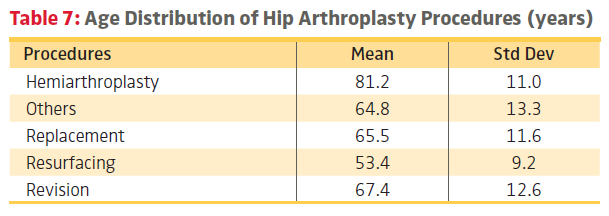
A Guest Blog by Richard Seiden
As a patient who has undergone multiple joint replacement surgeries (hip, knee, shoulder), I have learned a few things from my experience. Sharing what I’ve learned and making a difference in patient outcomes is important to me, but how? I’m a patient, not a doctor.
I have come to realize that I can play a meaningful role in improving care for future surgery patients, including myself, by doing what my doctor asks of me, and that includes participating in the patient-reported outcome (PRO) surveys. The surveys are offered by health care provider sites participating in a clinical data registry. Sites can include hospitals, ambulatory surgery centers (ASCs), or physician offices. I simply answer a few questions prior to and after my surgery. This enables my surgeon and clinical team to monitor my self-reported recovery, my pain levels, and my return to daily activities. Through my participation, I am also providing direct personal input into a larger quality improvement effort. The aggregated data from those efforts can, over time, improve the processes, protocols, device selection, and recovery techniques available to other patients in the future. Sharing my recovery and related levels of satisfaction, also educates surgeons and clinicians regarding best practices in patient care. Here is how we, as patients, can assist.
Help Registries Bring Clinical and PRO Data Together
The American Academy of Orthopedic Surgeons (AAOS) established the AAOS Registry Program. It includes multiple orthopaedic registries that collect clinical data regarding joint replacement surgeries (knees, hips, shoulders, elbows, and rotator cuff). There are plans to expand the Registries to all areas of orthopaedics in the future. While a registry serves the purpose of procedural data collection, analysis of that data can help surgeons choose individualized treatments and implantable devices that work best for each of their patients. Surgeons that submit to a data repository are showing a willingness to share data to help foster better care going forward. While clinical data reporting is essential, only patients can report whether their recovery expectations have been met. Clinical and PRO data, together, can provide a 360-degree picture of an individual’s healing process.
Patient Satisfaction Matters
Clinical registries have learned that while they can receive valuable information from physicians, hospitals, ASCs, device manufacturers, and payers, a critical source of data and experience can only be provided by patients themselves through PROs. Patients who complete survey questionnaires are the best source of information regarding symptoms; personal health status; multiple health conditions and prescriptions; physical, psychological, emotional impacts of their disease and treatments; and quality of life improvements, as a result of treatment.
Your medical team uses your responses to these surveys before surgery to gain an understanding of your current symptoms and help manage expectations. The responses submitted after the surgery can be compared to those submitted prior and identify if there has been any improvement. The collected data informs medical experts as to the best ways to improve patient care. One of the goals is to actively encourage shared decision making between the patient and the physician. Another goal is to gather data that will better inform efforts to perform comparative effectiveness of treatments, devices, prescriptions, and post-surgical recovery efforts. Over time, this will enable physicians to better understand and report on normative outcomes for similar conditions in patients.
Any PROs collected or submitted to the Registry Program are done so on a confidential basis. All the patient data is stored in secure databases, de-identified as to any individual, and aggregated in an effort to determine typical outcomes, side effects, device issues, etc.
The typical measurable outcomes in patient surveys include such objective data as improved physical function, reduced symptoms of pain and stiffness, cognitive function, and compliance with recommended post-procedure regimens (physical therapy, exercise, return to work, etc.). The surveys may also include subjective data that can only come from a patient, such as satisfaction with care, fulfillment of recovery expectations, physical, psychological and social well-being, and adjustment to the “new normal” of physical function and modification to pre-surgical activities, if any.
Sometimes it is not possible for a post-procedure patient to remember all of the questions or issues that should be addressed to their physician in a post-procedure appointment. The patient surveys offer a comprehensive vehicle for patients to review and consider all issues that may be affecting them, and will lead to a more tailored level of care by their surgeon to accelerate the recovery from the surgery. This is particularly true for patients who may have had a pre-existing condition prior to the surgery that requires special attention during the recovery period.
Know What to Look for in a PRO Program
A patient can quickly determine whether their patient or surgical setting (hospital or ambulatory surgery center) is participating in the AAOS Registries by looking at the AAOS website.
The physician or their staff should take the time to explain to the patient the importance of participation in the patient survey, including assurances as to confidentiality. The physician should then follow up on any suggestions from patients that enhance the patient experience. Physicians can provide examples of how patient survey results have caused them to modify their treatments at any time in the treatment process.
Typically, the surgeon’s office will notify patients that they will be receiving a survey questionnaire via email at varying times after the surgery. In most instances, the questionnaire can be completed in less than five minutes, and submitted via reply email from the patient’s own tablet, phone, or computer. Again, beyond the surgeon’s office, the results of the surveys and specific patient information is de-identified before it is submitted to a registry.
Conclusion
Ultimately, as an increasing number of patients participate in patient surveys and PROs, the data becomes more robust, and will lead to more informed decisions by all participants in the continuum of treatment including the patient, the physician, the hospital or ASC, the device manufacturer, and the payer. So, the next time your physician or care team asks you to complete a survey, realize that the few minutes you spend on responding can make a positive difference to you and many other patients.
Richard Seiden is a guest blogger and a member of the AAOS Registry Program’s Public Advisory Board (PAB). He serves as the PAB representative on the Program’s California State Registry Committee and the Shoulder & Elbow Registry committee.
For information about the AAOS RegistryInsights platform, speak with a Registry Engagement Associate at (847) 292-0530 or Request A Demo today!
Be sure to leave a comment in the form below!



